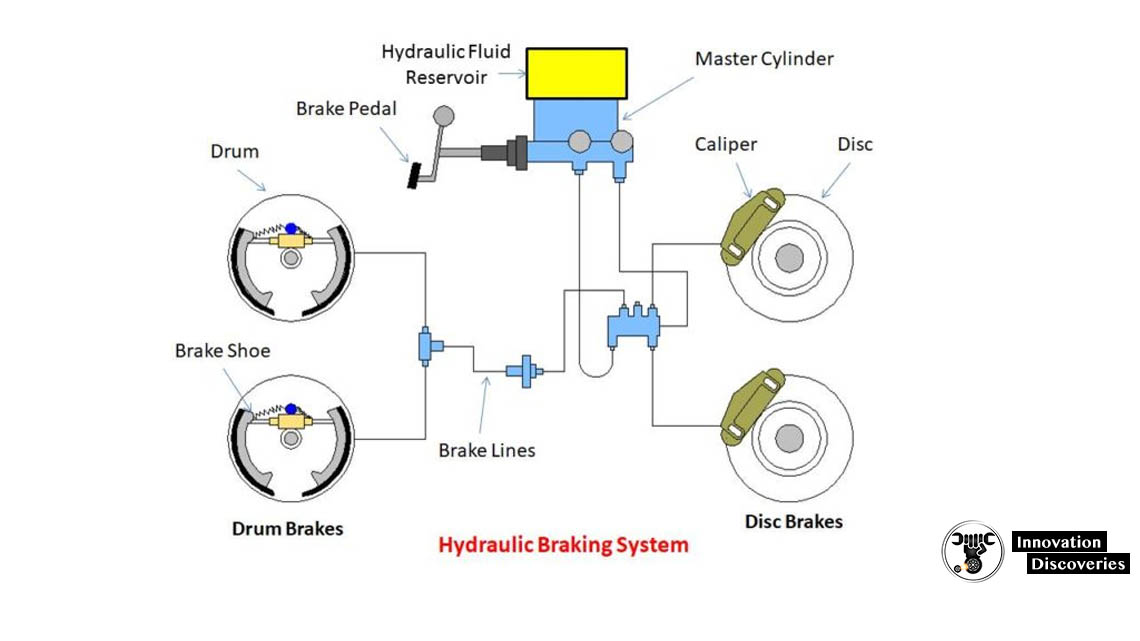The brakes are often something we take for granted when driving our cars.
But when there is a malfunction in the braking system, it will be easy to notice these symptoms because they will affect our driving performance.
One of the most common braking problems that someone will experience is when their steering wheel starts to pull to the right side or left side.
As they step on the brake pedal, it doesn’t usually matter which side the steering wheel pulls because it could be either side.
Sometimes, the steering wheel may pull from one side to the next.
Common Causes
These kinds of problems are likely the result of a malfunctioning calliper in your braking system.
In most circumstances, you’ll have a stuck calliper that simply needs to be replaced to get your braking system functioning normally again.
One more scenario for a pulling problem would be due to a collapsed brake hose.
When you check the hose, it may look fine on the exterior but what you won’t see is if the inner liner on the inside is causing a restriction or not.
The only way to diagnose this problem is by examining how the car pulls once you apply the brake.
Usually, if there is a collapsed brake hose then the car will only pull for a few seconds after you apply the brake and then go back to normal afterwards.
In rare situations, the brake hose will allow fluid to go into the calliper,
But then it won’t go back to the master cylinder.
This means the calliper won’t release fully, causing the pull to stay there.
Self Diagnosis Tips
Before you go to the auto shop and pay hundreds of dollars to a mechanic to replace your calliper or other relative parts you should perform a self-diagnosis on your vehicle first.
You see the calliper is generally the cause of these pulling problems but it isn’t always the cause.
You could be in a situation where you replace the calliper and still experience the pulling problem afterwards.
That is why you should always check your rear brakes, front brakes,
Steering components and suspension components to see if they are causing the pull.
For example,
If you have loose suspension components then that could also cause a pull on the steering wheel.
So, double-check to ensure these components are not loose.
Also, check your tire pressure and make sure each tire has the recommended amount of air as suggested by the manufacturer of your vehicle.
Low air pressure or faded tire treads can cause pulling as well.
Read More:
- STARTING SYSTEM: COMPONENTS AND WORKING PRINCIPLES(Opens in a new browser tab)
- Causes Of The Brake Warning Light Coming On(Opens in a new browser tab)
- 8 Reasons Your Car Is Making Grinding Noise When Braking(Opens in a new browser tab)
- Here’s Exactly How Hot Your Brakes Get When You Pull the Handbrake(Opens in a new browser tab)
- Regenerative Braking System(Opens in a new browser tab)

More About Braking Systems
- Top 5 Causes of Steering Wheel Shakes at Low and High Speeds
- HOW HYDRAULIC BRAKE WORKS?
- AIR BRAKE SYSTEM: COMPONENTS, WORKING PRINCIPLE, AND APPLICATIONS
- HOW DOES REGENERATIVE BRAKING WORK?
- 8 REASONS YOUR CAR IS MAKING GRINDING NOISE WHEN BRAKING
- Regenerative Braking System
- JAKE BRAKE VS. EXHAUST BRAKE: WHICH IS BETTER?
- SQUEALING BRAKES AT LOW SPEED: CAUSES AND SOLUTIONS
- TROUBLESHOOTING A HARD BRAKE PEDAL
- CONVERT DRUM BRAKES TO DISC BRAKES IN 3 STEPS!
- CAUSES OF THE BRAKE WARNING LIGHT COMING ON
Visit Forum
Visit Our Friendly Website


2 Comments